Country Report: Poland
Still motivated by its challenging, underdog past, Poland has strengthened its economic engine in Europe, where the nation’s pharmaceutical sector is increasingly pursuing enlightened approaches in areas such as market access and evidence-based decision-making.
This sponsored supplement was produced by Focus Reports
Project Director: Roxane Höck
Project Coordinator: Matthew Fsadni
Project Assistant: Emilie Bertincourt, Joseph Hall
Project Publisher: Mariuca Georgescu
Senior Editor: Louis Haynes
Editor: Patrick Burton
Graphic Assistance: Miriam León
For exclusive interviews and more info, please log ontowww.pharmaboardroom.comor write tocontact@focusreports.net
POLAND SOLID FOUNDATIONS, GRAND AMBITIONS
The story of Poland is the story of an underdog; savagely battered during WWII by German and Soviet forces, cut off from western markets until the fall of the Iron Curtain in the early 90s, the country has always been forced to get up off the canvas and fi ght back to prove itself. However, it is diffi cult to imagine the nation's challenging past, while passing through the European metropolis of Warsaw, the bustling streets of Krakow or the elegant old town of Wroclaw.

In fact, the country's economic success has been such that, according to the Central Statistical Offi ce of Poland (GUS), Poland's GDP growth rate reached 4.6 percent in 2017, with this refl ected in the Polish pharmaceutical market, which equally experienced substantial growth of 4.2 percent in 2017. This is backed by Poland's 38-million strong population, one of the largest in Europe. Additionally, "the country's favorable location in the center of Europe, where the main communication routes intersect, makes it possible to export goods to all European countries and thus reach over 500 million consumers. Poland's major trade partners are, among others, the power-economies of Germany, Russia, China, France, and the UK," details the Polish Investment and Trade Agency.
Contrary to the positive trajectory of Poland's energetic economy and pharmaceutical sector, the nation's public healthcare expenditure is still one of the lowest in Europe, projected to languish at a lowly 4.78 percent of GDP by the end of 2018, well below the European average which hovers around 6.8 percent. Recent 2017 hunger strikes by young Polish doctors to increase clinician wages drew worldwide attention, triggering the government to implement long-term plans to increase public healthcare spending to six percent of GDP by 2025. This has been reinforced by renowned cardiologist and recently appointed minister of health, Åukasz Szumowski, who is open to the idea of accelerating progress to reach the mark by 2024, though he also believes that, "there will be no revolution in the health system, though there are most definitely areas that are ripe for improvement."
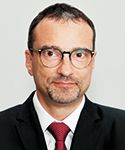
Marcin Czech, undersecretary of state, ministry of health
This evolutionary approach is being spearheaded by Poland's new drug policy, which "will be completed between 2018 and 2022," explains Marcin Czech, deputy minister of health and undersecretary of state at the Polish Ministry of Health (MoH). "This medicines policy will follow the global methodology of the World Health Organization (WHO) and will be constructed with all the key stakeholders in the public sector...aiming to portray a bird's-eye perspective of decision making for drug policy by taking into consideration both a medical and economic aspect."

Åukasz Szumowski, minister of health
ENLIGHTENED ACCESS
This open approach to the idea of pharmaco-economics and evidence-based decision making is not a completely foreign concept, with Poland belonging "to the group of countries that utilizes the cost-effective threshold, which is a solution to ensure healthcare spending of public funds is conducted in the most effective manner possible," according to Iga Lipska, director of the Drug Policy and Pharmacy Department at the MoH. This pharmaco-economic perspective has been implemented for years by the nation's Health Technology Assessment Agency (AOTMiT), which passes on recommendations to the MoH, which then determines market access conditions though, as Lipska indicates, "this HTA competence must now be transferred to the MoH, especially the economic commission for drug policy. This will ensure that price is not the determining factor for reimbursement decisions, and that more factors are assessed, such as the strengths and weaknesses of specific treatments, the target population and if the healthcare system is ready for its introduction."
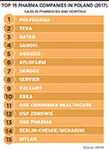
The government's strides forward in evidence-based decision making are welcome news for the innovative sector, which is keen to witness "a more holistic approach...where price is not the crucial decisive factor, with health outcomes and indirect costs always being considered," affirms Bogna Cichowska-Duma, general director at the Employers' Association of the Innovative Pharmaceutical Companies (INFARMA). She continues, "through cooperation with the MoH, we have managed to develop non-discriminative solutions with respect to reimbursement budget controls (e.g. payback) and to introduce modern reimbursement tools, such as risk sharing schemes (RSS) and emergency access."

Bogna Cichowska-Duma, general director, INFARMA
These new methods to improve the market access of innovative treatments have clearly paid dividends and, "in fact, if you look at the last two years, there have been more products reimbursed than the five years prior to 2015," points out country president of AstraZeneca Poland, Jarek Oleszczuk. This strong foundation for the future is equally supported by Dorota Hryniewiecka-Firlej, president of Pfizer Poland and INFARMA, as the Polish pharmaceutical industry is, "not limiting creativity, and is harnessing tools such as risk sharing agreements to adapt to the external environment and reimbursement regulations. In fact, in the last two years there has been a huge openness from the MoH to discussing solutions with the entire Polish pharmaceutical industry, so in the end innovation can obtain market access easier and faster."

Dorota Hryniewiecka-Firlej, president, Pfizer
Deputy Minister of Health Marcin Czech envisions that these aforementioned "risk sharing agreements will be deployed to finance the market entry of innovative drugs, rather than the current model that pushes the generated funds into the general healthcare budget." This, according to Czech, has the ability of creating a more sustainable healthcare system and forcing a change in legislation, so the budget allocated to pharmaceutical spending will be capped at "between 16.5 and 17 percent, rather than a rate up to 17 percent." Nevertheless, Hryniewiecka-Firlej underlines the key, overriding notion that "it is about incremental steps, being more of an evolution than a revolution."

Krzysztof Åokaj, general manager, Chiesi
A huge part of this pharmaco-economic push is the utilization of "real-world evidence of how the product is being utilized and what kind of effect and outcomes it is subsequently generating in the Polish healthcare ecosystem," expresses Maciej Kuz´mierkiewicz, general manager of IQVIA (formerly QuintilesIMS) Poland and the Baltics. This allows companies "to see this financial impact of the product for the entire length of the therapy, not just the initial costs. The full calculation will also include indirect factors such as the time the patient is out work, the length of stay in hospital, and the effect and cost of therapy 'x' compared with therapy 'y'. Our data gives our clients a great opportunity to make such comparisons; and thus, allows them to take real-world evidence to key stakeholders and have a meaningful dialogue around market access and outcomes."
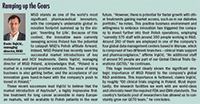
PRICING: TROUBLE BREWING
Despite the steps made along this positive path towards a sustainable healthcare model in the future, Krzysztof Åokaj, country manager for Chiesi Poland, argues that still "Poland is a low-price country for pharmaceuticals; therefore, during the negotiation process, there are often disagreements between companies and the MoH over pricing expectations." Nevertheless, the market has given him excitement, especially with the potential to introduce the company's flagship innovation "Trimbow®: a three-in-one treatment for chronic obstructive pulmonary disease (COPD)...this will make us the market leader in respiratory, a first for the company." Furthermore, Åokaj is looking to increase the Italian player's footprint through a "local acquisition, which will take place over the coming years and can bring significant growth to both sales and the overall organization."
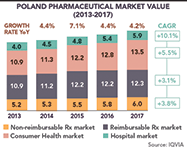
These somewhat mixed feelings towards the market situation are also felt by innovative French ophthalmology specialist, Thea, with Stefan Jaworski-Martycz, country manager Poland and CEE cluster lead believing that "the prices being proposed by the MoH are far too low for Thea Poland to remain sustainable; therefore, we made the decision to not launch some of our new products in Poland." However, Jaworski-Martycz, does offer his opinion on a possible solution to resolve this pricing situation. "Products of the same molecule, but preservative-free, generate higher R&D and production costs...Despite this, treatments are grouped together and priced at the same level. The Polish reimbursement policy should have better differentiation within therapeutic pricing baskets, as currently they are far too broad," he proffers.
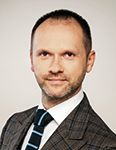
Stefan Jaworski, country manager, Thea
This perspective is echoed by eyecare competitor, Santen. Krzysztof KoÅodziejski, the company's country manager, laments that, "there needs to be a greater openness to increase the market penetration of innovative products in eye care as many are not on the reimbursement list. Therefore, Poles must pay for these products out of pocket, and generally this is out of the price range for the average person." Despite this, Jaworski-Martycz is hopeful for the future as although "ophthalmology is not a priority for the MoH," he urges the key decision makers to "sit down and discuss the benefits of innovative eye care products for Polish patients...this is not purely based around fair pricing, but the benefits healthy eyes will bring to Poland and this will allow the MoH to reach its core objective of a healthier nation."

Maciej Kuz´mierkiewicz, general manager, IQVIA Poland and Baltics
AN INVESTMENT MAGNET
Large multinationals establishing extensive Polish footprints is a trend that has been ongoing since "after the fall of communism in the early 90s when many state enterprises were facing bankruptcy and were bought by large foreign players," highlights Monika Constant, director-general of the French-Polish Chamber of Commerce. "The second wave came around 2004 with the influx of smaller business, and the final wave has come recently, with the reinvestments of profits by blue chip companies, a practice equally being conducted by the pharmaceutical industry." This has seen global powerhouse organizations such as Sanofi, Takeda, Teva, Servier and Sandoz position large manufacturing sites in Poland. In the meantime, the nation's recent trademark has been attracting global shared service centers (SSCs), from healthcare multinationals such as Lundbeck, Coloplast, AbbVie and Becton Dickinson, capitalizing on the nation's reputation for delivering low-cost, high quality services within the European Union.
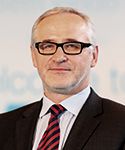
Jacek Glinka, president Europe, Mylan
Nevertheless, the perception of Poland as a low-cost alternative to Western Europe is slowly becoming a myth, and the country is stepping up its game, attracting international powerhouses to set up advanced operations, such as global R&D activities. AstraZeneca has positioned its global clinical trials center in the heart of Warsaw, housing roughly 1150 staff. "70 percent of AstraZeneca's global late-stage clinical trials are conducted in Poland, clearly the largest of the company's three global R&D centers," underlines Country Manager Jarek Oleszczuk. These investments have truly cemented Poland as the "second largest country globally for AstraZeneca in regard to patient numbers and the overall leader in Poland," continues Oleszczuk. Furthermore, the company has positioned one of its three global financial centers in Warsaw, conducting activities for 37 countries in Europe, the Middle East and Africa (EMEA) as well as one of five global HR offices. As Oleszczuk proudly puts it, "Poland is becoming an important global hub for AstraZeneca."

Poland as a centerpiece of activity is equally fundamental to Servier's regional operations, and the nation is "a top-ten market for the company globally in terms of turnover," highlights Joanna Drewla, general manager for Poland. Additionally, the company has positioned its International Center for Clinical Research in Warsaw, which is "a focal point for clinical studies for Slovakia, Czech Republic, Ukraine, Hungary, Bulgaria and Romania with the potential to expand in the future," notes Drewla.
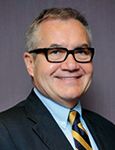
ZdzisÅaw SabiÅÅo, former president of the management board, PZPPF
Servier's Polish footprint does not stop there, with Warsaw being home to one of the French company's three main European manufacturing plants and, "since 1997, we have invested over USD 44 million into the Polish production site," ecstatically proclaims Colm Murphy, general plant manager at Anpharm, the Polish Servier production facility. In fact, the facility is projected to export nearly 50 percent of treatments in the future, with a major focus being CDMO operations, especially in the analysis sector within the newly upgraded Quality Control Laboratory. Murphy understands that due to the nation's growing economy, they will not be able to "compete with rock-bottom manufacturing prices," though understands that "Poland fits into the niche of great value" with the nation establishing "a higher-quality product with excellent reliability in terms of service, at a competitive price."
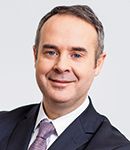
Colm Murphy, plant manager, Servier
The American biopharmaceutical giant, AbbVie, has also been drawn to Poland and, in mid-2015, achieved "reimbursement of the first non-interferon treatment for HCV in Poland. We estimate that around 10,000 patients have been cured from the disease thanks to this therapy," highlights country manager Jacek Mazurkiewicz. The positivity of the market has had a knock-on effect on other branches of the affiliate, and the Warsaw office now has a "rapidly expanding clinical trials department and in Poland we currently conduct over 40 trials in immunology, oncology, infectious diseases and general medicine. This is a significant increase over last year and is also reflecting on the ongoing increase of staff." This, along with the establishment of one of the company's three global SSCs in Kraków that takes care of financial and accounting operations, shows the great potential of Poland for AbbVie.
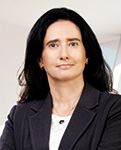
Joanna Drewla, general manager, Servier
However, what really stands out is in terms of AbbVie's Polish operations is its impact in the world of IT, a sector in which Poland has established a recognized global brand. In 2016, Mazurkiewicz met with the CEO of Heart Warsaw and together they "noticed that start-ups from the fast developing healthtech area were not being represented equally. We discussed the potential to grow this area and AbbVie Poland has since helped promote start-ups in this field. We see significant potential here, with digital solutions now starting to redefine diagnosis and care. This cooperation with Heart Warsaw allows us to capitalize on the nation's direct expertise," claims Mazurkiewicz.
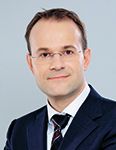
Jacek Mazurkiewicz, general manager, AbbVie
LOWEST-PRICE WINS!
Despite the Polish pharmaceutical industry experiencing an encouraging promotion of innovative therapies, the domestic market is still dominated by generics, encompassing, according to IQVIA data, roughly 77.7 percent of the market share in terms of sales volume and 65.9 percent in sales value. This high generic saturation is not uncommon within the region and, "if you analyze European healthcare markets, 60 to 80 percent of therapies are generics," punctuates Jacek Glinka, president of Mylan Europe. ZdzisÅaw SabiÅo, former president of the Polish pharmaceutical industry employers association (PZPPF) bolsters this viewpoint as, "it is obvious that generics companies are providing a large quantity of affordable products that allow Poland to construct a more sustainable healthcare model." This generics model is based on "a limit price system, in which pricing is based on the cheapest generic within a large limit group," continues SabiÅÅo.
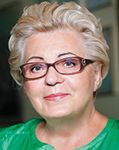
Irena Rej, president, Farmacja Polska
The issue with this 'lowest-price wins' business model, according to Glinka, is that this system is being created in "a non-sustainable manner," going on to say that, "Europe should take a more holistic view of the importance of the generics sector. If generic volumes in Europe were replaced by innovative products, it would cost Europe USD 122 billion annually.... governments must start looking at the generics industry as the saviors that can help them achieve their healthcare goals." Glinka holds the belief that "the generics ecosystem is becoming more competitive than ever before, despite European governments being exclusively focused on cost containment measures towards generics, rather than innovative therapies." The drastically lowered generics prices have the potential to "force organizations to pull out of the country, that in the end results in the patients losing out," cautions Glinka.
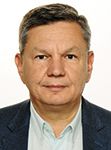
MichaÅ Pietraszek, general manager, Apotex
This dire industry viewpoint is not shared by Marcin Czech, deputy minister of health and undersecretary of state at the MoH who does "not see a risk.

The Polish generics market has such strong competition and so many players." His concerns are more centered "around the functioning of the jumbo groups and reference pricing – although – if you have a reference system that rewards reduced prices, it allows more and more generic companies to enter the market; therefore, we are happy with the current model...We are always monitoring products to see when they reach patent cliffs, so we can reduce prices through generics and biosimilars, ensuring on the other end the introduction of innovative medicines."

JarosÅaw król, president of the board, Polfa Tarchomin
Nevertheless, these pricing pressures on the Polish market were initially felt over five years ago, with the implementation of the 2012 Reimbursement Act and, "the following year the market dropped nearly 40 percent in value. At this time, the Polish authorities placed tremendous pricing pressures on the market, attempting to lower our prices in some cases by up to 70 percent," insightfully expresses MichaÅ Pietraszek, general manager of Apotex Poland. This tough pricing model forced companies to rethink their strategy and "no longer focus in high volume and older treatments as the price erosion in Poland is immense," notes Pietraszek.
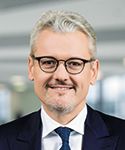
Markus Sieger, CEO, Polpharma
Pietraszek's market tactics for Apotex Poland were to focus on "staying within the niche areas as it allows us to provide to the market innovative generics at a comfortable price point." Furthermore, Apotex, like many generics players, is taking advantage of the nation's incredibly strong over the counter (OTC) and dietary supplement markets, that in 2017 combined for a mouth-watering sales total of USD 2.36 billion according to IQVIA. Many leading experts expect this to rise in parallel with an increase in Polish people's disposable income, as well as because of "the fact that there are long waiting times to visit doctors and specialists. Therefore, the practical mindset of the Polish population has them going to the pharmacy to purchase their medicines and save time," continues Pietraszek. "These areas are less regulated and allow us to split the risk across the board or our operations. This has given us substantial growth and now makes up 25 percent of our total revenues," he concludes.
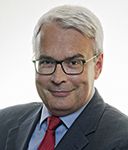
Artur Chabowski, CEO, Mabion
JarosÅaw Król, president of state-owned player, Polfa Tarchomin has a different approach to the low-priced Polish market, believing many generics "companies are fighting and scraping to generate market share, and many are failing and eventually become bankrupt." He notices that, "the supplier market in the pharmaceutical world is less saturated and has the power in terms of pricing, especially in regard to active pharmaceutical ingredients (APIs)." In this regard, Król's plan of attack is to manufacture and sell APIs and the company has a brand-new facility for this process." He adds that "this strategy will allow us to better navigate the market as a certified western world API supplier, which will in turn allow us to be more profitable." This effort is improved by the company's strong ties with local universities, such as the University of Warsaw, as well as Król's previous career in the banking sector; giving him the astute economic background required under the challenging financial pressures of the Polish generics industry.
THE BRAVE NEW WORLD OF BIOSIMILARS
One pathway out of the world of pure generics is to move into the world of biologic equivalents: biosimilars. In fact, "over the next three to five years, the market in general will experience top performing original products coming off-patent – a great opportunity for biosimilar players and healthcare systems," iterates Jacek Glinka, president of Mylan Europe. Additionally, during this period "based on Medicines for Europe data, there is the potential for Europe to save 61 billion USD annually due to biosimilar launches," he notes.
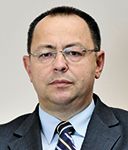
Witold WÅodarczyk, general director, POLMED
Now Poland wants in on this area of innovation. Irena Rej, president of the Polish Pharmaceutical Chamber, Farmacja Polska, points out that, "the Ministry of Economic Development and MoH is working closely together to stimulate biologic innovation by supporting biotechnology entities. Polish companies, such as Adamed and Polpharma, are attempting to invest into R&D within this advanced area."

Marzena Kulis, managing director CEE, J&J medical devices
Polpharma is the clear pharmaceutical champion in Poland, having a seven percent share of the overall pharmaceutical market and strong international ties across the region, especially in Russia and Kazakhstan. Seven years ago, the owner, renowned Polish entrepreneur, Jerzy Starak "invested heavily into biosimilars. It was a period of no acceptance for the biologic generics and no reimbursement in this area. He made the brave decision to create a biologic centre in Gdansk and hired top specialists from around Europe. Now, the Gdansk biotechnology site is a Polish R&D hub and houses a fully GMP-certified pilot production plant," affirms CEO of the Polpharma Group, Markus Sieger.

PaweÅ PrzewiÄźlikowski, CEO, Selvita
On top of that, Polpharma in 2016 "acquired a Dutch company, Bioceros, that does cell development, the basis of any biologic drug. Furthermore, we are constructing a state-of-the-art biotechnology production plant just nearby Warsaw," continues Sieger. "This means that we have a vertically integrated business model for biosimilars from cell line to the finished product, with the ability to globally commercialise the product ourselves or through partnerships." This R&D approach has the company thinking big, and despite looking to consolidate their Polish footprint, "the real objective of ours is to grow our US presence as this market has incredible potential."
Despite this aggressive mindset by the nation's leading pharmaceutical player, it is another local company, Mabion, that has already put Poland on the international biosimilar map. Their treatment, MabionCD20®, an equivalent for Roche's Rituxan®, has incredible potential with the market for this product being "eight billion USD; four billion USD in the US, two billion USD in Europe and two billion USD in other markets," details Artur Chabowski, president of Mabion. "In April, we will file an application with the EMA and hope to launch MabionCD20 by the end of 2018," he proffers. This has allowed the company to set up a historic partnership with Mylan for distribution in the EU and Baltics and has opened up global doors, with Mabion "finalizing agreements across the globe, such as Australia, New Zealand, Canada, Africa, Asia and South America. It is like a jigsaw puzzle, as some agreements cover more than one country...concerning the USA, we have sent documents to the FDA and will be discussing with them shortly the potential for MabionCD20 to be positioned there."
THE 'SELVITA' EFFECT
The nation's move to become a larger cog in the global innovation chain has been a key strategy of the government strategy, headlined by the much talked about 'Morawiecki Plan': the government's responsible development plan appropriately named after its creator, current prime minster, Mateusz Morawiecki. This developmental strategy has been dually hammered home by Jadwiga Emilewicz, the minster of entrepreneurship and technology, who acknowledges that "if the pharmaceutical industry is second only to the defense industry, which spends the most on R&D, we would be imprudent if we did not want to develop it if the Polish economy is to become less imitative and more innovative in a short time."
A pure example of this innovation is Selvita, a Polish success and the largest biotechnology company between Germany and India. Thus far they have already "established a partnership with Berlin-Chemie a member of Italian Menarini Group for SEL24, the first ever partnership deal for an innovative Polish molecule," proudly explains CEO PaweÅ PrzewiÄźlikowski. The next step for the Krakow-based innovator is to complete development of "SEL120, the first-ever CDK8 treatment that targets cancer stem cells and RNA transcription; a completely different mechanism to any molecule ever discovered."
SPILLOVER INTO MEDTECH
The overall increase in Polish healthcare expenditure does not only impact the pharmaceutical industry but facilitates a domino effect on the medical technology industry. "The value of products sold by the Polish medical device market is roughly USD three billion; inclusive of both sales in Poland and exports," expresses Witold WÅodarczyk, director general of the Polish Chamber of Medical Devices, POLMED. Witold is excited for the future due to the proposed increase in healthcare expenditure, Poland's ageing population, the drastic increase in people's literacy towards medical devices, and as Poles "now understand what they can have reimbursed and are enquiring constantly with the National Health Fund (NFZ)... in the end, this will result in an increase in sales."
A vital step to improving medical device health literacy is education, an activity that medical device companies are taking to a whole new level. Johnson & Johnson (J&J) Medical's managing director of Central Eastern Europe, Marzena Kulis, understands this is crucial as "Poland needs to understand that bringing a cost-effective solution is not necessarily the cheapest option; there is more to this concept than just the individual price per product unit...this pharmaco-economic approach is not only in the long-term, as cost efficiency can easily be solved by introducing a quicker treatment for a health condition." To demonstrate this effect, Kulis explains that J&J Medical takes a "holistic, full 360-degree picture approach and gives the medical community an opportunity to completely revolutionize and develop care within their therapeutic area." This revolves around "changing the entire paradigm of a certain disease's care by offering programs that cut across the entire specialty, in sectors such as spinal treatment, orthopedics and surgery."
This increased focus on a holistic approach to treatment is shared by Lukasz Korybalski, regional manager of Becton Dickinson who cites the two overriding factors in the market as pricing and healthcare spending. "Both these aspects are interconnected," he notes. "When we approach the medical community with a single product, price is looked upon first. Though if we come to the market with a complete solution to therapeutic areas, such as in oncology and cardio-surgery, it is a completely different story. Our customers, be it the government or hospitals, see the value in spending more funds in one sector, to save in another. The challenge is making these key partners understand our economic models and accept the challenge in helping design a treatment solution that takes in a holistic approach, so patients can benefit in the end."

Country Report: United Arab Emirates
March 1st 2020With an estimated annual growth rate of 10%, the Middle East is now consistently outpacing traditionally sought-after “pharmerging” heavyweights such as China and Brazil. The United Arab Emirates is at the center of this newfound momentum-asserting its own credentials as a prospective destination for big-ticket foreign investment in healthcare.